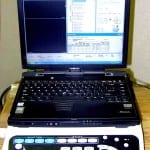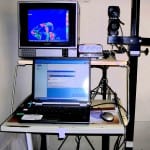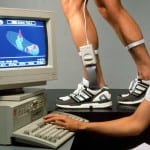Diagnostic Testing Methods and Curing Pain


One of the most common causes of chronic pain is the lack of a complete diagnosis. Many people believe that if pain is coming from soft tissue (referring to muscle or nerve) then it should be self-limited and resolve within a reasonable period of time. They also may believe if pain is more severe, or does not go away as expected, then it must be due to a surgical problem.
The vast majority of pain disorders, however, are not remedial to surgical intervention. When that happens, seeking the medical opinion from a pain specialist who is dedicated toward finding out the source of the pain, and why it isn’t getting better, can be in the patient’s best interest. While structural defects such as herniated disks or failed back surgery can certainly cause pain, looking further means that you have to search for other sources as well.
Methods used to find these other sources include:
- physiologic tests that evaluate nerve or vascular injury
- ultrasound studies that image muscle or ligament strains and tears
- blood tests to find hidden rheumatic, infectious, or metabolic conditions
- skin temperature measurements to assess weather-sensitive pain
- performance-oriented studies to objectify activity or movements that either impair function or become altered as a result of abnormal function.
Examples of structural tests (that look for disks or degenerative arthritis) include traditional X-Rays, CAT Scans, MRI, and Myelography. While these tests study “hardware,” they give incomplete information. By analogy, if you took a picture of a telephone you might be able to tell approximately how old it is, or what kind of condition it is in, but you could not tell whether it actually works or not.
That’s where physiologic studies come into play. Physiologic tests include Electromyography (EMG) & Nerve Conduction Velocity (NCV) Studies and Thermography. These work more like a volt-ohm meter and evaluate the function of sensory, motor, and weather-sensitive nerve fibers. You can also think of them as tests that study the “software.”
Even if the hardware and software are fine, a hidden or chronic infection (or a virus) can play havoc with your system, stopping any chance you have of getting well. A wide variety of specialty blood and urine tests can find out if such a problem is present. These tests can also be used to evaluate for incomplete presentations of rheumatic conditions such as gout, lupus, or rheumatoid arthritis that predispose a person to chronic aches and pains.
The amount of blood available is at least as important as what is in it. You can think of the vascular system like a computer’s operating system (like Windows XP or 98). If there is hardening of the arteries, an abnormality with clotting, or lack of proper nutrition, then unremitting pain can result, whether the hardware and software have problems or not.
While many are familiar with vascular tests for heart disease and stroke, they are not aware of similar tests for the limbs. Even in the absence of severe disease, cholesterol, diabetes, and hypertension are signals that smaller blood vessels may be compromised. It is quite possible to have a vascular back attack rather then a heart attack.
In some cases, the problem is that the system has simply gotten out of whack; the components do not work together effectively. Such a scenario can occur if all of the parts alone are fine (they are simply not compatible due to add-ons or changes over time), or if each of the parts has its own individual problem. In this instance, function-oriented tests can be of value. Computerized Motion Analysis can define structural design limits or problems with spinal motion. These tests can tell you what you can lift safely (rather then what you think you can lift) or if the way your spine moves has structural weakness in a certain direction or combination of directions.
Gait Analysis studies can determine if walking or standing mechanically makes your symptoms worse or identify problems with balance. By widening the scope of diagnostic options to be considered, your ability to define the source or sources of pain is enhanced. Naturally, so are your chances for pain relief.



Summary Of Diagnostic Testing (Assessments) Offered:
1) Muscle And Nerve Disorders:
- Electromyography (EMG): for radiculopathy, myopathy or neuronopathy
- Nerve Conduction Studies (NCV): for entrapment, peripheral neuropathy or radiculopathy
- Thermography: for RSD and Sympathetic Pain Syndromes
2) Ligament Or Muscle Injuries:
- Diagnostic Musculoskeletal Ultrasound: for strains and sprains
3) Mechanical Injuries Or Abnormality of Gait:
- F Scan/Electrodynography (Gait Analysis) & Balance Testing: for sports injuries, mechanical back pain, diabetic foot ulcers and walking disorders as in polio
4) Vascular Disorders:
- Vascular Segmental Doppler Arterial Studies & Ankle Brachial Indexes (ABI’s): for physiologic assessment of vascular disorders
- Duplex Doppler for arterial and venous blood flow & stenosis studies
5) Psychologic Assessment:
- Minnesota Multiphasic Personality Inventory (MMPI): for personality profile screening
- Insight consulting: health impacts of belief systems, values and life styles
6) Environmental Illness, Immunologic, Infectious & Clotting Disorders:
- Urine: for chemical and heavy metal toxicity
- Blood Testing: nutritional analysis and immune function analysis
7) Hormonal Replacement Therapy:
- Blood testing and compounding prescription





